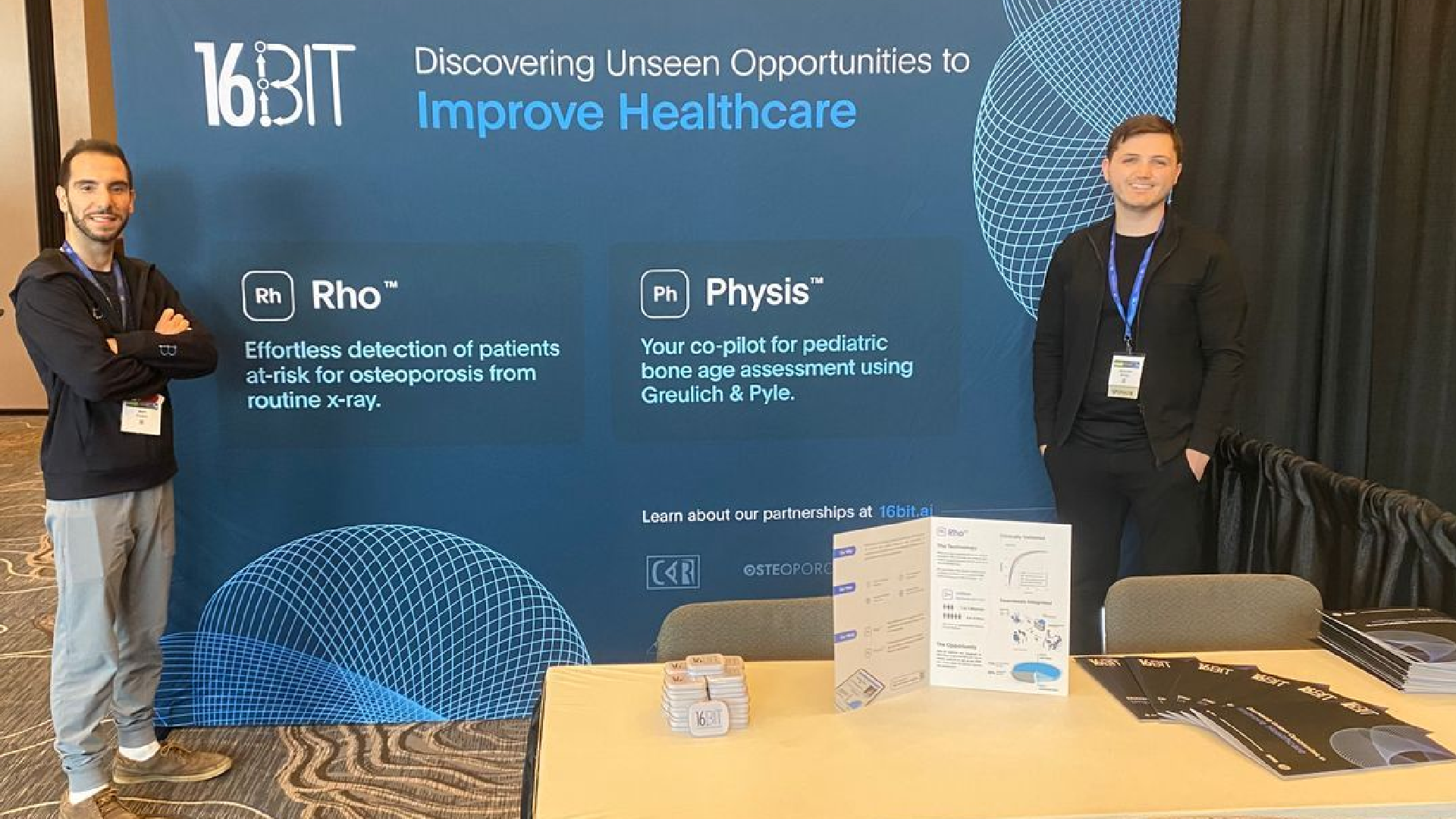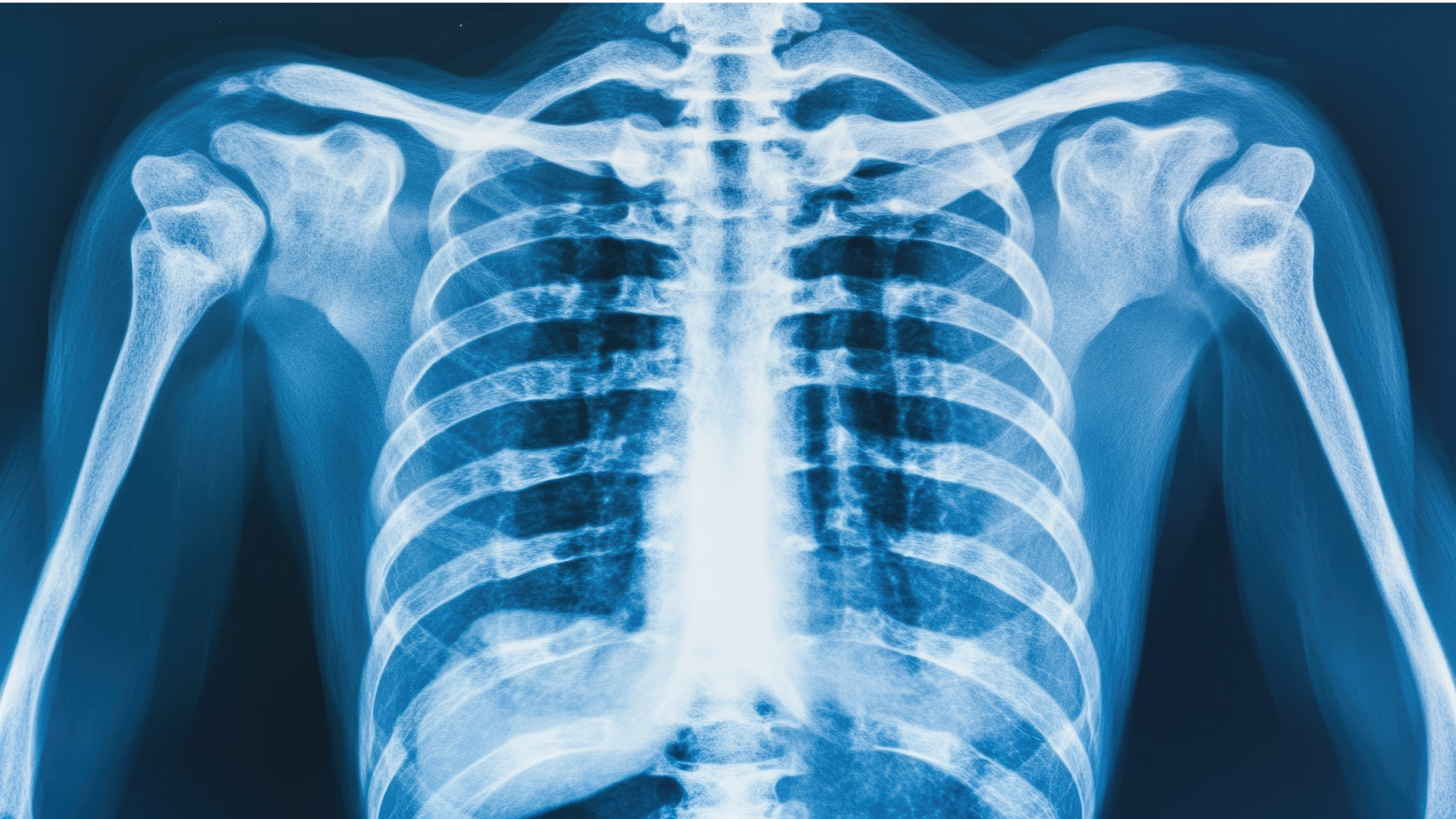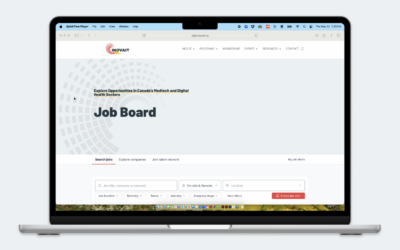As with many transformative businesses, 16 Bit came to be because of, sure, the brilliance and vision of its founders, but also a great deal of serendipity. 16 Bit might not exist had Dr. Mark Cicero and Dr. Alexander Bilbily not both chosen to pursue medical school (with backgrounds in engineering and computer science, respectively), had they not both decided to specialize in radiology, and had they not ended up in the same residency training program at the University of Toronto.
When they met, they bonded over their fascination of artificial intelligence (AI) in medicine and their desire to leave their mark on the field. “There is so much information available about the human body from various tests and monitors; it’s impossible for a human to digest and see all the patterns that may exist there. AI is perfectly suited to delve through that,” Bilbily explains.
In 2016, Bilbily and Cicero built a tool called Physis that uses machine learning to help radiologists determine a child’s bone age (useful to diagnose growth disorders). Physis won first place in a Radiological Society of North America competition and is now used by around 200 radiologists in Canada.
While important, bone age tests are not very common, and Cicero and Bilbily wanted to have a greater impact on healthcare in the country. They’ve done that with Rho, an AI screening tool that predicts osteoporosis risk from existing X-rays that patients underwent for another reason—such as to look for a broken bone, tumours, or infections.
Currently, doctors use dual-energy X-ray absorptiometry (DEXA) scans to measure bone density and diagnose osteoporosis. If they can catch osteoporosis early, doctors can prevent someone from breaking a hip, leg, or other fracture. They can avoid the cascade of health problems that can result when an older adult can’t exercise or care for themselves independently.
The challenge is that many people are either unaware of this or not concerned enough about the risk to go for the DEXA scan. Plus, younger people can have osteoporosis and not know it, as they fall outside the DEXA screening guidelines.
As physicians, Cicero and Bilbily knew that bone quality, not just density, changes with osteoporosis. “An analogy is bone density is how much concrete you have, while bone quality is how that concrete is structured. If you don’t have proper pillars, the bone will be much weaker,” explains Bilbily.
The “aha” moment came when Bilbily and Cicero shared their suspicions with each other that even though X-rays don’t directly show bone density, the way DEXA scans do, X-rays could contain clues about bone quality, and therefore osteoporosis. While a human can’t analyze the subtle bone quality changes on an X-ray and diagnose osteoporosis, Cicero and Bilbily felt that an AI system could. If AI could predict osteoporosis from an X-ray, doctors could diagnose and treat osteoporosis early on and in more people, thereby significantly improving patient outcomes and decreasing healthcare expenditure.

Pictured above: Mark Cicero (left) and Alex Bilbily (right), the Co-Founders and Co-CEOs of 16 Bit.
To build Rho, Cicero and Bilbily paired tens of thousands of DEXA scan results with X-ray scans. They then fed these pairs into their proprietary AI algorithm. As the computer “learned” from more DEXA and X-ray pairs, the program got better and better at recognizing osteoporosis in a wide variety of X-rays from various anatomical sites and in people of a wide range of ethnicities.
Fortunately, the founders’ inkling that X-ray scans could predict osteoporosis was sound. Rho is 85% accurate in predicting low bone density. “A positive Rho result tells the doctor, ‘You should seriously assess this patient’s bone health,’” explains Bilbily. A bone health assessment often involves a fracture risk questionnaire with or without a DEXA, depending on the specific clinical scenario.
Despite the early “aha” moment, Bilbily and Cicero are quick to quash the idea that innovation is simply a series of breakthroughs. They created Rho’s algorithm by running hundreds of experiments over many months and, bit by bit, tweaking the algorithm. Then, the “hard part” came, as Cicero explains, which was integrating the tool into various hospital imaging systems, ensuring Rho provided the information in a time and manner doctors would find useful, and figuring out who would pay for it.
Funding from INOVAIT allowed Cicero and Bilbily to hire team members and launch partnerships with hospitals, imaging clinics, and research groups. INOVAIT’s early support was essential to build up the company’s value and attractiveness by reducing its risk to possible future investors. “Now, investors are showing tremendous interest in our business,” says Cicero. “But, two years ago, when we had proof of concept research and no product, when our business was the riskiest it was going to be, INOVAIT came through.”
To ensure Rho could be a viable product, Bilbily and Cicero came up with a short-term solution within a long-term strategy. In the short term, radiologists are paying to use Rho. This makes sense because Rho ultimately increases DEXA scans, and radiologists are paid for each scan they interpret. In the long term, Bilbily and Cicero are building data to show that patients whose X-rays are analyzed by Rho are more likely to get diagnosed and treated for osteoporosis and are therefore less likely to experience a fracture. Given that each fracture can cost our public healthcare system $30,000 to $50,000, the goal is to use the data to convince governments that paying for Rho assessments would lead to net cost savings.
Despite 2024 Nobel Laureate Geoffrey Hinton, called the “Godfather of AI,” suggested in 2016 that “people should stop training radiologists,” Cicero and Bilbily both predict human radiologists will remain vital alongside advances in AI, at least for the next decade or so.
Beyond that, the future of radiology, and almost any field, is too hard to predict. But they’re nonetheless certain that AI, through Rho and other innovative medical technologies, will continue to improve care for patients. And, as Bilbily puts it, “How can doctors argue against that?”




